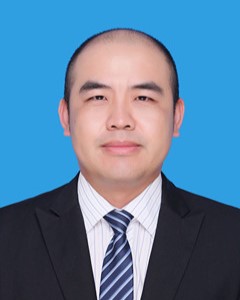
Speakers
 | Prof. Xiaomo Jiang National High-level Talent Program Selectee The top 2% of scientists globally Dalian University of Technology, China Biography: Xiaomo Jiang received his Ph.D. from The Ohio State University and currently is a distinguished professor at Dalian University of Technology, Innovation Leading Talent of State, Liaoning and Dalian, Chief Scientist of Digital Energy Equipment in National 2011 Collaborative Innovation Center for Major Equipment Manufacturing, and Founding Director of Liaoning Key Laboratory of Digital Twin Technology and Research Institute for Carbon Neutrality in DUT. His research interests include digital twin and smart maintenance for turbomachine maintenance. He has coauthored over 100 papers, one book and nine chapters, and been listed as one of the Elsevier highly cited Chinese researchers (11 consecutive years), and top 2% of world's most cited scientists (Stanford University ranking). Title: Digital Twin-based Intelligent Operation and Maintenance for Wind Turbines: Current Status and Future Prospects Abstract: As the global leader in both installed wind power capacity and turbine quantity, China is witnessing megawatt-class wind turbines emerge as pivotal enablers in building its new energy ecosystem under the "Dual Carbon" strategic framework. Digital twin technology, serving as a transformative digital solution for full lifecycle management of large-scale energy equipment, drives cross-domain innovations spanning dynamic simulation, model-driven design, intelligent manufacturing, optimized control, and predictive operation and maintenance (O&M). Recognized as foundational infrastructure for strategic sectors including defense, aerospace, and manufacturing digitalization, this technology is reshaping industrial paradigms. Our research team has pioneered a Cyber-Physical-Virtual (CPV) tri-domain convergence paradigm for intelligent equipment O&M, integrating structural dynamics, multiphysics coupling mechanisms, AI algorithms and virtual reality (VR) technologies. Groundbreaking advancements have been achieved in physics-embedded explainable artificial intelligence, data-physics hybrid-driven lightweight modeling and extreme-condition-adaptive real-time digital twin evolution. This report elobrates our recent advancement on methodological framework, technological breakthroughs, and industrial implementation of digital twin-enabled intelligent O&M for wind turbines. Furthermore, we prospectively introduce digital twin systems for wind turbine design- O&M synergy, embodied intelligence-equipped equipment foundation models and human-machine-digital twin collaboration frameworks. |
 | |
 | Prof. Haitao Li H-index: 37 Jiangsu University, China Biography: Prof. Haitao Li,distinguished professor of Jiangsu and Jinshan. In recent years, he has been mainly engaged in the design of new functional materials and their research in the fields of catalysis, sensing and clean energy. He has presided over the National Natural Science Foundation of China and Youth Fund Projects and other fundings (6 in China and 4 in Australia, with a total of more than 7 million Chinese yuan). The research results he has engaged in have been published in authoritative academic journals in the form of more than 100 SCI papers, such as Advanced Materials, Angew. Chem. Ed. Int. and other international journals, cited more than 14,000 times (Google Scholar), four articles were selected as cover articles, and 9 ESI highly cited articles. 10 Chinese patents have been authorized. He was awarded the title of Distinguished Professor of Jiangsu, the 2023 Decarbon Award (11th ICMAT) and other awards. Title: Ammonia Synthesis Driven By Clean Energy |
 | |
 | Prof. CHING YERN CHEE H-index: 46 Universiti Malaya, Malaysia Biography: Ir. Dr. Ching Yern Chee is a professor in the Department of Chemical Engineering, Universiti Malaya. She graduated from the Faculty of Chemical Engineering, UTM. She is a Chartered Engineer registered by the Engineering Council (UK). Her research focus is Environmental Friendly Products and Technologies; and she has secured more than RM 5 million research grants. Assoc. Prof. Ir. Dr. Ching Yern Chee has contributed immensely to the development and enhancement in science & technology in Malaysia, particularly in the field of green polymer composite. Her significant achievement is the development of a novel composite lacquer with high FIR effectiveness and UV blocking properties for agricultural greenhouse film. This invention has successfully provided multi-functional roles to agricultural film in a cheaper processing cost and allows for optimum growing conditions. The development of green and biodegradable mulch film from oil palm fiber/biopolymer composite has contributed to the reduction of landfill plastic mulch film from algricultural farms. She has provided solutions to industrial problems and have developed new composite materials that exhibit enhance performances and reliabilities as alternatives to petroleum-based plastics. Ching has filed numerous patents for her inventions and received many accolades as a distinguished scholar. Ching has won >20 awards at international/national exhibitions pertaining to her research and inventions. Ching was the recipient of “Leaders in Innovation Fellowship 2017” by the Royal Academy of Engineering, UK for her notable contribution in the field of engineering education and advancement in composite field. Ching is the recipient of “Top Research Scientists Malaysia 2020” (TRSM) from Academy of Sciences Malaysia (ASM). Dr. Ching was selected as one of UM Researchers Among The World's Top 2% Scientists 2022, 2023 and 2024 by Elservier. She is also a recipient of the “Hitachi Fellowship 2019” with a tenure at the The University of Kitakyushu, Japan as a visiting scholar. The international awards bestowed on Dr. Ching have opened new doors for her research through collaborations and consultation. Title: Sustainable Packaging Solutions : Development of Starch-Epoxidized Vegetable Oil-Based Bioplastics Abstract: The growing environmental concerns associated with conventional petroleum-based plastics have driven the demand for sustainable and biodegradable alternatives. This study focuses on the development of bioplastics for packaging applications using starch as a natural polymer matrix reinforced with epoxidized vegetable oils such as oil palm and soya sources. Native starch, known for its biodegradability and abundance, was chemically blended with epoxidized vegetable oil (EVO) to enhance its flexibility, hydrophobicity, and mechanical integrity. The epoxidation of vegetable oils was achieved through a green process involving performic acid generated in situ, targeting high oxirane content and improved reactivity with the starch matrix. Glycerol and other natural plasticizers were incorporated to tailor the film properties. The bioplastics were evaluated for their mechanical (tensile strength, elongation at break), thermal (TGA, DSC), and barrier properties (water vapor permeability, moisture resistance). FTIR and SEM analyses were conducted to investigate chemical interactions and morphological changes. The results demonstrated that the incorporation of epoxidized oils significantly improved the film's flexibility and water resistance without compromising biodegradability. The starch-EPO and starch-ESO films showed promise as sustainable packaging materials, contributing to the transition toward a circular bioeconomy and reduced plastic pollution. This work underscores the potential of integrating agro-based feedstocks in developing functional, eco-friendly packaging solutions. |